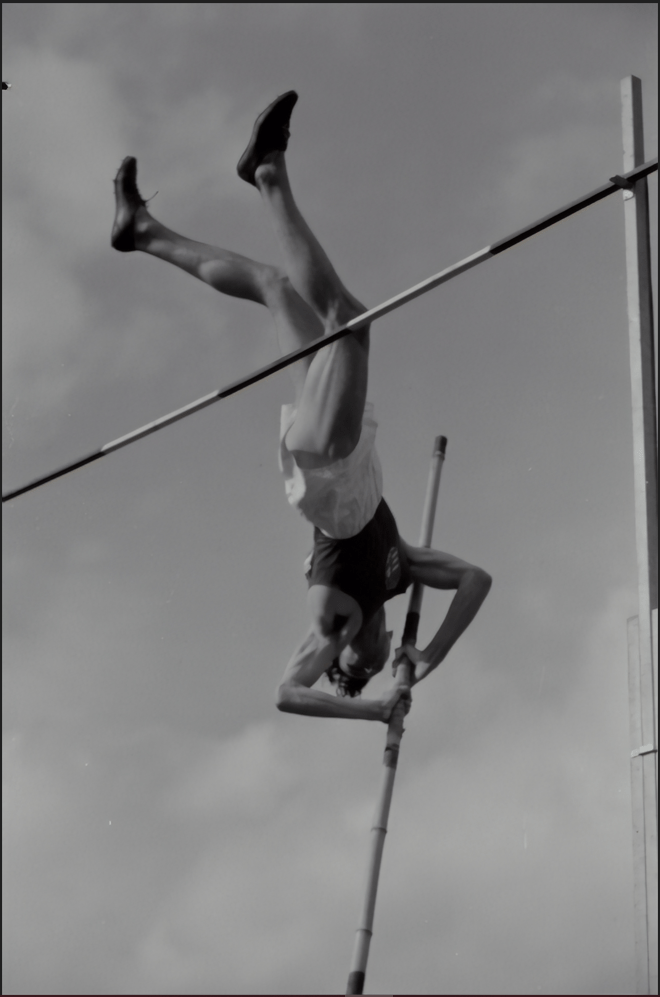
In this in-depth exploration of pole vault, we will dive into the history, technique, equipment, and the incredible athletes who have left their mark on the sport.
The History of Pole Vault
Pole vault has a rich history that dates back centuries. It is said to have originated in Europe, particularly in the Netherlands, in the 16th century. Initially, the sport had a more practical purpose: it was used to cross canals and ditches. Athletes would use long poles to vault over these obstacles. As time passed, the sport evolved, and the focus shifted from utility to competition.
The first recorded pole vault competitions in the United States took place in the 1840s, with participants using rigid poles made of materials such as bamboo. The introduction of flexible poles made of materials like fiberglass in the mid-20th century marked a significant turning point in the sport. These flexible poles allowed athletes to achieve greater heights and completely transformed the pole vaulting scene.
Pole Vault Equipment
The primary piece of equipment in pole vault is, of course, the pole itself. These poles are typically made from fiberglass, carbon fiber, or a combination of materials. The choice of pole depends on the athlete’s weight, skill level, and personal preference. Poles come in various lengths and stiffness ratings, with more experienced athletes often using longer, stiffer poles.
The landing area consists of a foam pit surrounded by a mat to ensure a safe landing for the athlete. A planting box is placed at the end of the runway, which is a rigid structure where the pole is planted during the vault. The crossbar, set at various heights, is the target that athletes aim to clear during the competition.
Pole Vault Technique
Pole vault is a sport that demands a combination of speed, strength, agility, and technique. Here is an overview of the basic pole vault technique:
-
Approach: The athlete starts with a sprint down the runway, building up speed and momentum. The length and speed of the approach can vary depending on the athlete’s skill level and the pole they are using.
-
Plant: As the athlete reaches the end of the runway, they plant the pole into the planting box. This step is crucial, as it determines the trajectory and success of the vault.
-
Takeoff: The athlete pushes off the ground using the pole’s flexibility to generate upward momentum. This phase is a combination of the athlete’s strength, timing, and the pole’s rebound.
-
Clearance: Once the athlete leaves the ground, they need to clear the crossbar. This requires precise body positioning and control to ensure they do not make contact with the bar.
-
Turn: After clearing the bar, the athlete must rotate their body to be in a position to land safely on the foam pit.
-
Landing: The final phase is the landing, where the athlete aims to safely land in the foam pit without touching the mat or the ground.
Pole vaulters often spend years honing their technique and adjusting their approach, plant, and clearance to reach new heights. It’s a sport that combines the grace of gymnastics with the power of track and field.
Discover the thrilling world of sports – from top athletes to training tips, Pole vault and Carrom gear, and the latest updates in the industry
The Legends of Pole Vault
Pole vault has seen a plethora of legendary athletes who have pushed the boundaries of the sport and set astonishing records. Some of the notable figures in the history of pole vault include:
-
Sergei Bubka: The Ukrainian pole vaulter is often regarded as one of the greatest in the history of the sport. Bubka set 35 world records during his career and was the first to clear the height of 6 meters. His innovative techniques and consistency at high heights made him an icon in the sport.
-
Renaud Lavillenie: Lavillenie, a French pole vaulter, won the gold medal at the 2012 London Olympics and set multiple indoor and outdoor records. His dedication and technical prowess have made him one of the most recognizable faces in modern pole vaulting.
-
Yelena Isinbayeva: Isinbayeva, a Russian pole vaulter, is considered one of the greatest female athletes in the sport. She set numerous world records and won two Olympic gold medals in her career.
These athletes, among others, have demonstrated the heights that can be achieved in pole vault, and their performances continue to inspire aspiring vaulters around the world.
Notable Achievements in Pole Vault
Pole vault has been a staple of the Olympic Games and other major international competitions. Here are some notable achievements in the sport:
-
The First 6-Meter Jump: Sergei Bubka, as previously mentioned, was the first athlete to clear the 6-meter barrier in 1985. This achievement marked a historic moment in pole vault history.
-
Stefan Holm’s Four Consecutive World Championships: Swedish vaulter Stefan Holm won the World Championships in Athletics four times in a row from 2003 to 2007, showcasing his remarkable consistency at the top level of the sport.
-
Yelena Isinbayeva’s Dominance: Isinbayeva’s 28 world records and her back-to-back Olympic gold medals in 2004 and 2008 solidified her status as one of the all-time greats in women’s pole vault.
-
Renaud Lavillenie’s Indoor World Record: Lavillenie set a world indoor record of 6.16 meters in 2014, surpassing Bubka’s previous record. This jump demonstrated the continued progression of the sport.
Challenges and Risks in Pole Vault
While pole vault is undoubtedly thrilling and visually spectacular, it is not without its challenges and risks. Athletes who participate in pole vault must overcome several obstacles:
-
Injury Risk: Pole vault involves athletes launching themselves into the air from significant heights. Mistimed landings or planting the pole incorrectly can lead to injuries, including sprains, fractures, and in rare cases, more severe injuries.
-
Technical Precision: The sport’s complex technique requires years of practice and fine-tuning. Athletes must continuously work on their approach, plant, and clearance to improve and reach new heights.
-
Mental Pressure: The pressure of clearing ever-increasing heights, especially in major competitions, can be mentally taxing. Athletes must deal with performance anxiety and maintain their focus under pressure.
-
Equipment Challenges: The poles and other equipment in pole vault require careful maintenance and selection. Using the wrong pole or equipment can result in failed attempts and potential injuries.
The Future of Pole Vault
As pole vault continues to evolve, athletes are constantly pushing the limits of what is possible. New materials and technology continue to improve the equipment used in the sport, potentially allowing athletes to vault even higher. Coaches and athletes are also exploring data and video analysis to refine techniques further.
The inclusion of pole vault in major international competitions like the Olympics ensures that the sport will continue to captivate audiences worldwide. The excitement and spectacle of pole vaulting make it a favorite event for spectators, and this popularity is likely to endure for years to come.
In conclusion, pole vault is a sport that combines athleticism, precision, and fearlessness to create a thrilling spectacle that has captivated audiences for centuries. Its rich history, remarkable athletes, and iconic achievements make it one of the most exciting events in track and field. While the sport is not without its challenges and risks, the dedication of athletes and the continuous evolution of technique and equipment promise a bright future for pole vault. As athletes continue to soar to new heights, pole vault will remain a symbol of human potential and the pursuit of excellence.




